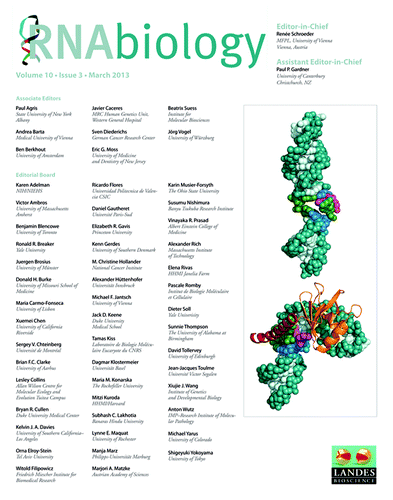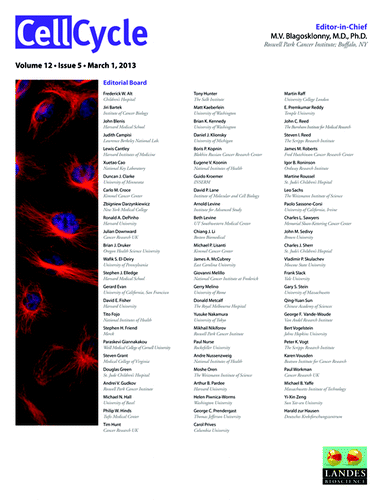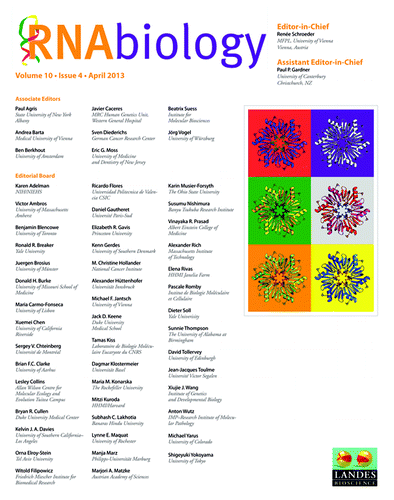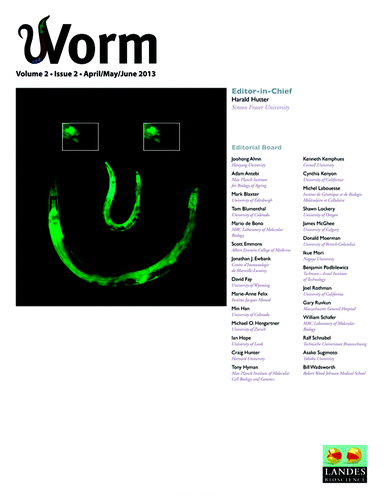rRNA transcribed spacer domains stored in the nucleolinus of surf clam oocytes
The nucleolinus is a nuclear subcompartment long ago posited to play a role in cell division. In a previous study in surf clam oocytes, cytoplasmic foci containing a nucleolinar protein were shown to later recruit γ-tubulin, identifying them as centrosomal precursors. Now, Drs Mark and Mary Anne Alliegro demonstrated the presence of structural RNAs from the nucleolinus in these procentrosomes. These structural RNAs included the well-known but poorly understood rRNA-transcribed spacer regions. In situ hybridization revealed a specific and dynamic association of these structural RNAs with the cell division apparatus that extends through the early stages of meiosis. In addition to their bearing on the debate over the nature of centrosome- and spindle-associated RNAs, the observations also suggest that rRNA spacer regions are not simply waste products to be discarded immediately, but may be functional byproducts that play a role in formation of the cell division apparatus ().Citation1
Subcellular localization of the APOBEC3 proteins during mitosis
Humans have seven APOBEC3 DNA cytosine deaminases. The activity of these enzymes allows to restrict a variety of retroviruses and retrotransposons, but may also cause pro-mutagenic genomic uracil lesions. During interphase the APOBEC3 proteins have different subcellular localizations: cell-wide, cytoplasmic or nuclear. This implies that only a subset of APOBEC3s have contact with nuclear DNA. However, during mitosis, the nuclear envelope breaks down and cytoplasmic proteins may enter into what was formerly a privileged zone. A recent study addressed the hypothesis that all APOBEC3 proteins have access to genomic DNA by analyzing the localization of the APOBEC3 proteins during mitosis. Dr Reuben S Harris and coworkers showed that APOBEC3A, APOBEC3C and APOBEC3H are excluded from condensed chromosomes, but localize cell-wide during telophase. However, APOBEC3B, APOBEC3D, APOBEC3F and APOBEC3G were excluded from chromatin throughout mitosis. After mitosis, APOBEC3B localized in the nucleus, APOBEC3D, APOBEC3F and APOBEC3G in the cytoplasm. Both structural motifs as well as size may be factors regulating chromatin exclusion. Deaminase activity was not dependent on cell cycle phase. The authors also analyzed APOBEC3-induced cell cycle perturbations as a measure of the enzyme’s capacity to inflict genomic DNA damage. AID, APOBEC3A and APOBEC3B altered the cell cycle profile, and, unexpectedly, APOBEC3D also caused cell cycle changes. The authors concluded that several APOBEC3 family members have access to the nuclear compartment and can impede the cell cycle, most likely through DNA deamination and the ensuing DNA damage response. Such genomic damage may contribute to carcinogenesis, as demonstrated by AID in B cell cancers and, recently, APOBEC3B in breast cancers ().Citation2
AAGAG repeat RNA is an essential component of nuclear matrix in Drosophila
The eukaryotic nucleus is functionally and spatially compartmentalized and maintains a dynamic organization of sub-nuclear bodies. This organization is supported by a non-chromatin nuclear structure called the nuclear matrix. Although the precise molecular composition and ultra-structure of the nuclear matrix is not known, proteins and RNA molecules are its major components and several nuclear matrix proteins have been identified. However, the nature of its RNA component is unknown. A recent study by Dr Rakesh Mishra and colleagues showed that in Drosophila melanogaster, transcripts from AAGAG repeats of several hundred nucleotides in length are critical constituents of the nuclear matrix. Both strands of this repeat are transcribed and are nuclear matrix associated, and the polypurine strand can be detected in situ. The authors also showed that AAGAG RNA is essential for viability. Taken together, the study results reveal the molecular identity of a critical RNA component of the nuclear architecture and point to one of the utilities of the repetitive part of the genome that has accumulated in higher eukaryotes ().Citation3
Histone H1 and HP1 regulate specific gene expression rather than global transcription
The highly conserved Hox transcription factors define positional identity along the anterior-posterior body axis during development. Inappropriate expression of Hox genes causes homeotic transformation, which leads to abnormal development of a specific region or segment. Caenorhabditis elegans offers an excellent model for studying factors required for the establishment of the spatially-restricted expression of Hox genes. Recently, a linker histone (H1) variant, HIS-24, and a heterochromatin protein 1 (HP1) homolog, HPL-2, were identifed as chromatin factors that contribute to the regulation of specific Hox gene expression through their binding to the repressive histone mark H3K27me3. HIS-24 and HPL-2 were found to act in a parallel pathway as members of the evolutionally conserved Polycomb group (PcG) silencing complex, MES-2/3/6. By microarray analysis, it was found that HIS-24 and HPL-2 are not global transcriptional repressors as suggested by earlier studies, but rather are fine tuners of expression control of selected genes. A recent commentary by Dr Monika Jedrusik-Bode discusses how HIS-24 and HPL-2 mediate the repression of specific genes in C. elegans. The author proposes possible mechanisms for such an unanticipated function of an individual H1 variant and HP1 in the transcriptional repression of Hox genes ().Citation4
References
- Alliegro MA, Alliegro MC. Localization of rRNA transcribed spacer domains in the nucleolinus and maternal procentrosomes of surf clam (Spisula) oocytes. RNA Biol 2013; 10:367 - 72; http://dx.doi.org/10.4161/rna.23548; PMID: 23324608
- Lackey L, Law EK, Brown WL, Harris RS. Subcellular localization of the APOBEC3 proteins during mitosis and implications for genomic DNA deamination. Cell Cycle 2013; 12:762 - 72; http://dx.doi.org/10.4161/cc.23713; PMID: 23388464
- Pathak RU, Mamillapalli A, Rangaraj N, Kumar RP, Vasanthi D, Mishra K, et al. AAGAG repeat RNA is an essential component of nuclear matrix in Drosophila. RNA Biol 2013; 10; http://dx.doi.org/10.4161/rna.24326; PMID: 23588056
- Jedrusik-Bode M.. Histone H1 and heterochromatin protein 1 (HP1) regulate specific gene expression and not global transcription. Worm 2013; 2; http://dx.doi.org/10.4161/worm.23703



